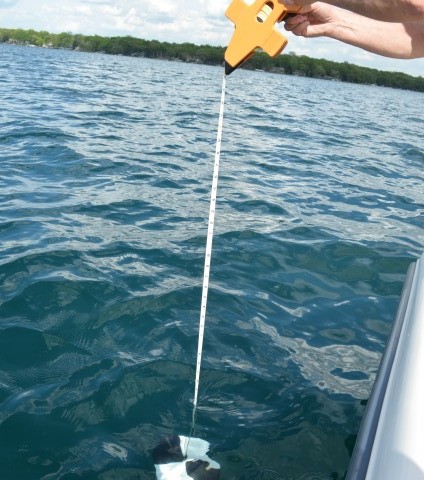Water Quality
Water Quality Committee
An important part of the mission of the GLQO is to protect and preserve the water quality of Gull Lake and its surrounding watershed. The GLQO Water Quality Committee monitors water quality in Gull Lake and Little Long Lake throughout the summer months. We also fund and arrange for regular surveys of Gull Lake to detect the presence of invasive plant species and arrange for treatment to control these species. In addition, the GLQO maintains and staffs the boat wash at Prairieville Township Park.
Our summer water quality monitoring program includes participation in the Michigan Cooperative Lakes Monitoring Program (CLMP): Since 2008, GLQO volunteers have participated in CLMP—a partnership between EGLE, and the Michigan Lakes and Streams Association—to take basic water quality measures in Gull and Little Long Lakes from May through September. You can click to see the recent CLMP results for Gull Lake and Little Long Lake.
Collaboration with the Kellogg Biological Station (KBS): Early collaboration between the GLQO and KBS helped bring about construction of the Gull Lake sewer system, which was instrumental in reversing trends in declining water quality in Gull Lake in the 1970’s. A summary of that work was published in The Michigan Riparian (Tessier and Lauff 1992); you can read it here (go to p. 12). The GLQO has continued to partner with KBS to conduct more in-depth testing of Gull Lake, Little Long Lake, and the major inflows to those lakes. KBS staff have compiled historical data to provide a picture of trends in water quality in our watershed. A summary of this work was compiled by Dr. Steve Hamilton in 2022.
Why Monitor Water Quality?
The lakes and streams of the Gull Lake watershed are a treasured resource that supports swimming, boating, fishing, and other recreational activities for lake residents and visitors from throughout the region. These waters also support a diverse wildlife and boost area property values.
But we cannot take the high quality of our lakes and streams for granted. Runoff and ground water inputs from fertilizers, agriculture, and septic systems can overload lakes and streams with nutrients and other contaminants and accelerate their decline. Resulting algal blooms, excessive plant growth, mucky bottom sediments, and related problems can reduce the recreational value of our waterways, harm wildlife, and lower property values.
Although the installation of the sewer system around Gull Lake in 1984 improved water quality, other factors pose potential threats to our lakes and streams today. These include residential development, agricultural activity, and aging septic systems that remain in the watershed. There is also an increasing threat of aquatic invasive species, particularly plants, that can spread between lakes.
Lake residents can help support the GLQO efforts to maintain high water quality in Gull Lake by adding native plantings along the shoreline to reduce runoff and making sure that boats they bring onto the lake are cleaned to reduce the spread of invasive species.
We welcome interested GLQO members to join our efforts to preserve the high quality of waters found in the Gull Lake watershed. Contact us at info@glqo.net and put “Water quality” (or something similar) in the Subject Line.






